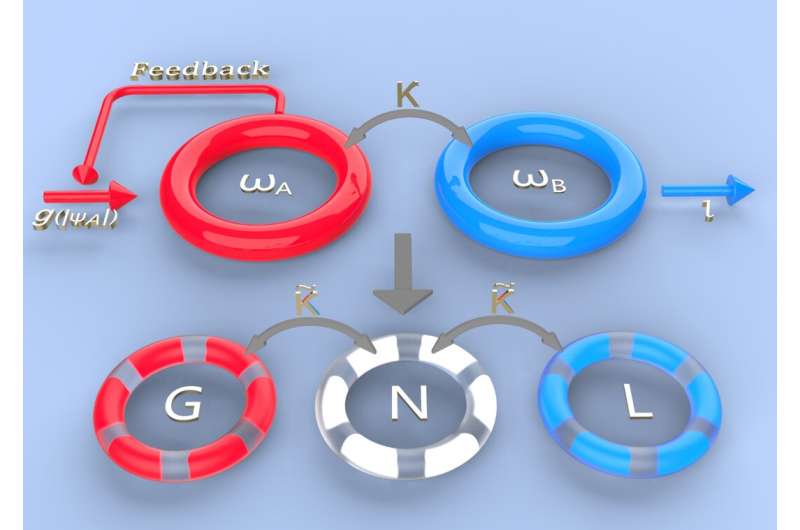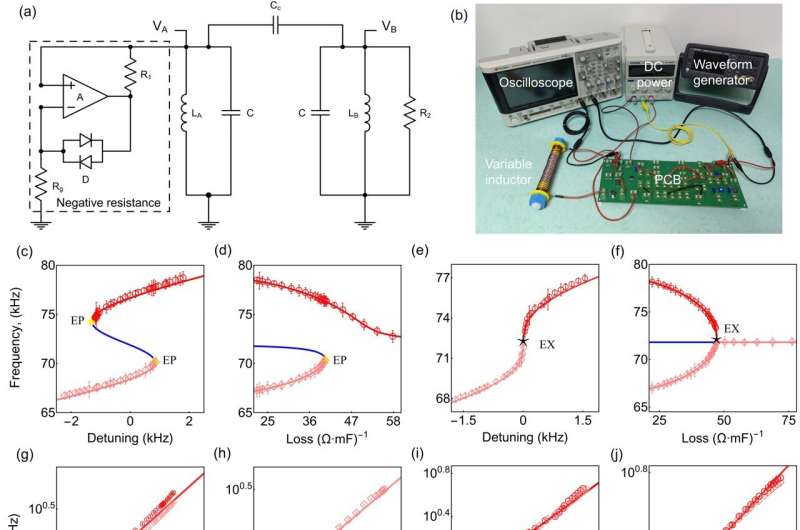A nonlinear exceptional nexus with an ultra-enhanced signal-to-noise ratio

Prof. Duanduan Wan and Prof. Meng Xiao at the School of Physics of Wuhan University recently published a study in the journal National Science Review. Their work provides a simple while intuitive example, demonstrating with both theory and circuit experiments an “exceptional nexus” (“EX”), a higher-order exceptional point (HOEP). This HOEP is realized within only two coupled resonators with the aid of nonlinear gain. Moreover, such a HOEP exhibits an ultra-enhanced signal-to-noise ratio.
Exceptional points (EPs) underlie the recent advances in non-Hermitian physics, such as sensitivity enhancement, skin effects, and mode braiding. Over the last few years, there has been an ongoing debate about whether EPs can improve the sensor’s performance or not.
Possible arguments include stringent parameter requirements, fundamental resolution limits, and noise amplification near the EPs. Facing these challenges, researchers intend to conclude that EPs, even higher-order EPs (HOEPs), enhance responsivity instead of signal-to-noise ratio. Here, this team from Wuhan University shows that such a nonlinearity enabled HOEP exhibits not only diverging responsivity but also diverging signal-to-noise ratio.

Exploring the nonlinear gain saturation in non-Hermitian systems, this team demonstrates with both theory and circuit experiments an exceptional nexus (EX), a HOEP, within only two coupled resonators (see the first image). Intriguingly, the above-mentioned difficulties encountered for other EPs in sensing can be naturally reconciliated due to the exquisite dimension correlation in this nonlinear system. Moreover, the signal-to-noise ratio is significantly improved in the proximity of HOEP (see the second image).
This result can have significant instant impacts on the fundamental understanding of the exceptional singularities of nonlinear non-Hermitian systems, and may open new avenues for applications such as ultrasensitive measurements.
More information:
Kai Bai et al, Nonlinearity enabled higher-order exceptional singularities with ultra-enhanced signal-to-noise ratio, National Science Review (2022). DOI: 10.1093/nsr/nwac259
Citation:
A nonlinear exceptional nexus with an ultra-enhanced signal-to-noise ratio (2022, December 22)
retrieved 23 December 2022
from https://phys.org/news/2022-12-nonlinear-exceptional-nexus-ultra-enhanced-signal-to-noise.html
This document is subject to copyright. Apart from any fair dealing for the purpose of private study or research, no
part may be reproduced without the written permission. The content is provided for information purposes only.
For all the latest Science News Click Here
For the latest news and updates, follow us on Google News.

